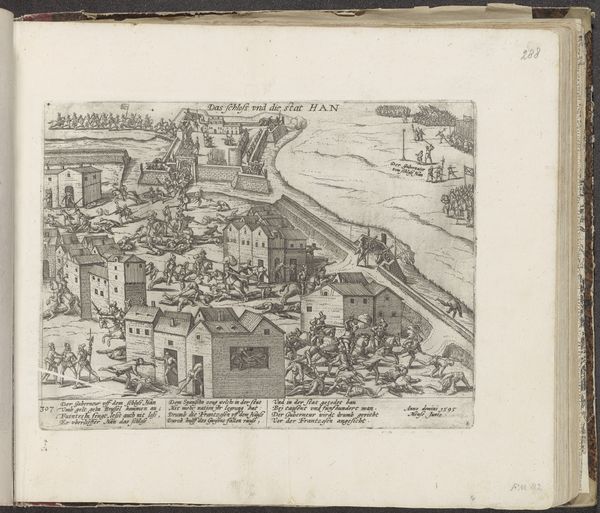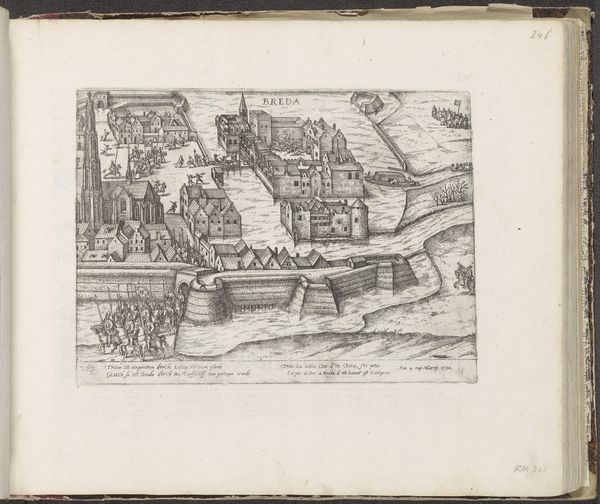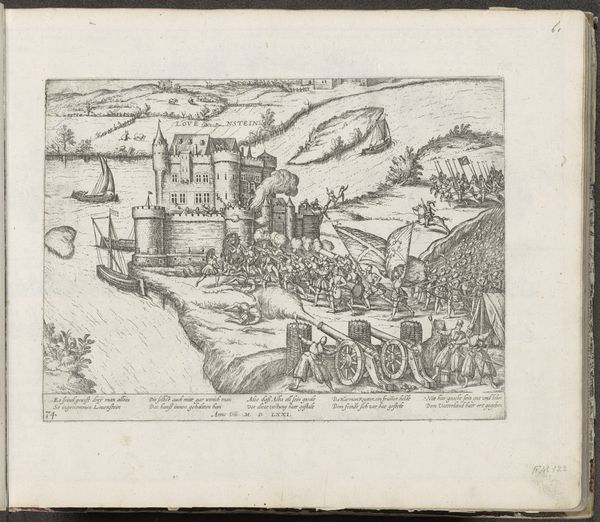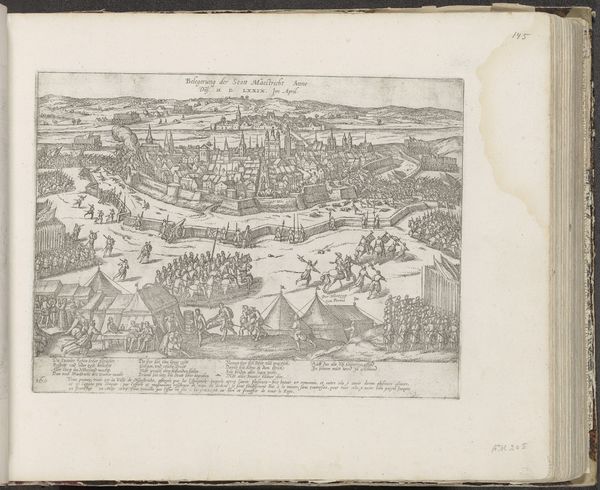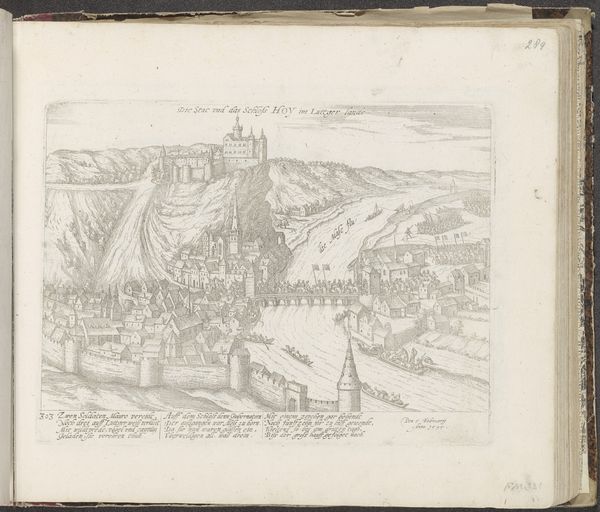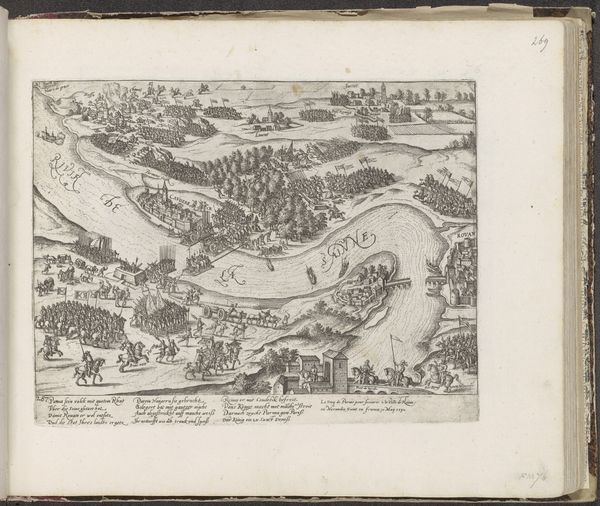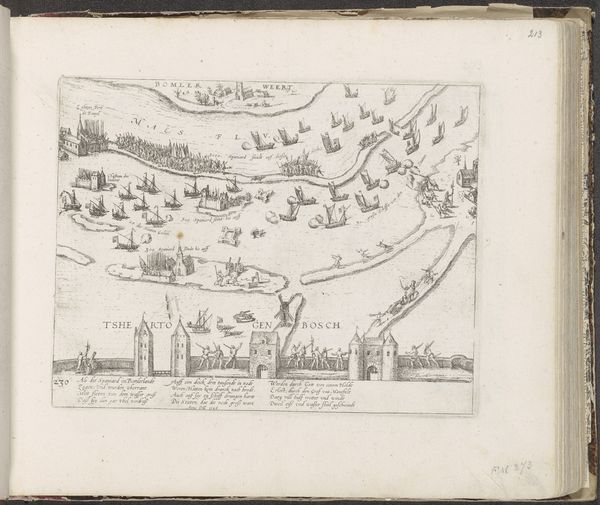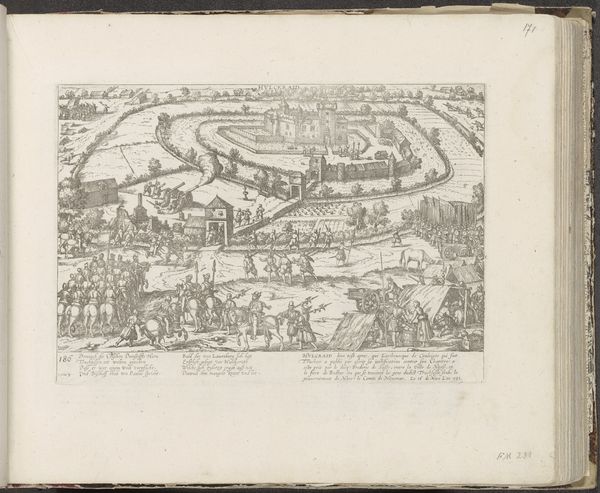
drawing, print, ink, engraving
#
drawing
#
narrative-art
#
pen drawing
# print
#
pen sketch
#
sketch book
#
perspective
#
personal sketchbook
#
ink
#
sketchwork
#
ink drawing experimentation
#
pen-ink sketch
#
pen work
#
sketchbook drawing
#
cityscape
#
history-painting
#
northern-renaissance
#
sketchbook art
#
engraving
Dimensions: height 236 mm, width 305 mm
Copyright: Rijks Museum: Open Domain
"Herovering van Hoei door de bisschop van Luik", or "The recapture of Huy by the Bishop of Liège," was made in 1595 by Frans Hogenberg as an engraving. The precise lines and attention to detail is achieved through a technique that involves incising an image onto a metal plate, which then can be inked and printed. This process, like others in printmaking, relies on the pressure of a press to transfer the ink to paper. Hogenberg has used this technique to create a scene packed with activity, from the advancing army to the detailed architecture of the city. The texture is almost entirely linear, built through hatching and cross-hatching to create a sense of depth and volume. This print is not just an artwork but a historical document, reflecting the socio-political tensions of its time. The labor involved in creating such a detailed print would have been considerable, demanding great skill. Ultimately, understanding Hogenberg's print requires appreciating the intricate processes involved in its creation. It challenges us to see beyond the image itself and consider the social and economic context in which it was made.
Comments
No comments
Be the first to comment and join the conversation on the ultimate creative platform.

